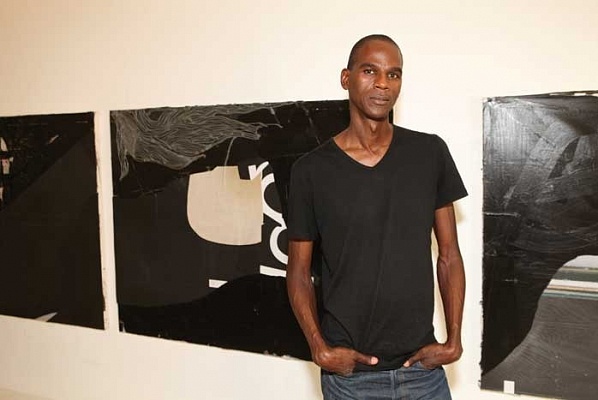As opportunities abound, the relationship between artists and dealers gets a whole lot more fluid
Nobody knows if or when the music might stop, but for the time being, artists are dancing their way around the gallery system. Once a rarity, it is now common for artists to shift allegiance.
Recent high-profile movers include Mark Bradford, Sterling Ruby, Elmgreen & Dragset, Adel Abdessemed, Cecily Brown, Adrian Ghenie and Theaster Gates. The heightened activity is a side-effect of an art market in which few bat an eyelid at the prospect of $1.5bn being spent on post-war and contemporary art in New York this week: at the auctions, at Frieze New York (which opens to VIPs on Wednesday) and at the satellite fairs.
An open marriage
Bradford has left Sikkema Jenkins and White Cube (C51) and is now exclusively represented by Hauser & Wirth (B7). Ruby has left Hauser & Wirth, but is still represented by a network of galleries including Sprüth Magers (C9), Gagosian Gallery (B60) and Xavier Hufkens (B44). Gates is now showing only with White Cube, which has also signed Etel Adnan and Michael Armitage. Abdessemed no longer works with David Zwirner (C50), and Nicole Eisenman has left Koenig & Clinton to join Anton Kern Gallery (C5).
Brown, who recently ended a 15-year relationship with Gagosian, has a show at Maccarone in New York (until 20 June) and is working with Thomas Dane Gallery in London, but has no plans for permanent representation. “Being with a gallery is like a marriage, so there doesn’t seem to be any reason to leap into another marriage straight away,” she told New York magazine.
“It’s not unusual for artists to have crossover representation in one city, where you maybe work with two galleries,” says the artist Michael Elmgreen. Elmgreen & Dragset are represented at the fair by Galerie Perrotin (C25), Massimo De Carlo (B1) and Victoria Miro (B3).
The artists’ show at Perrotin (Past Tomorrow, until 23 May) is their first in New York for ten years. Elmgreen tells us that they are speaking to “a few American galleries” about further US representation, adding that Perrotin is amenable to a more open relationship—but collectors should not expect an announcement soon. “We don’t jump on board very easily,” Elmgreen says. “Our work demands a certain kind of gallerist, so we try for a long time to scare people away. If that doesn’t happen, we surrender and say OK, let’s play.”
Widening the field
There are more options than ever for in-demand artists. The increase in the number of art fairs, galleries, museums and foundations over the past two decades means that there are simply more places to show art. Meanwhile, auctions have moved closer to the primary market.
The downside is that some artists can feel overlooked. “I needed to schedule an exhibition and it was impossible for them to show my work,” says the artist Ghada Amer of Gagosian, which she left in 2010. She is represented at the fair by Cheim & Read (C38) and Tina Kim Gallery (C43). “A gallery shouldn’t be more famous than its artists. I was being branded through a dealer, but I wanted to be known for my work,” Amer says.
The challenge for dealers is to keep artists satisfied while retaining solo representation within a territory, Emmanuel Perrotin says. “If another gallery is necessary… we will [agree] to collaborate,” he says. “But it’s always difficult for the artists to share their relationships with too many people.”
Going it alone
Some artists are snubbing the classic arrangement in which they focus on the creative process while galleries take care of finances, loan requests and sales. “More and more artists try to keep those aspects to themselves and maintain a certain independence,” says Andreas Gegner, a director at Sprüth Magers. The younger generation of artists, having grown up in a booming market, may want to either distance themselves or run the show.
The artist Tavares Strachan chooses not to work with any one gallery. “I don’t feel I need that traditional representation,” he says. “I work with institutions, galleries, museums—whatever needs to be done for the art to happen. Relationships can be a lot more dynamic nowadays and dealers are more open to different kinds of situations.”
Strachan warns of the dangers of focusing on art’s commercial aspects. “It’s not useful for an artist to play the market,” he says. “It makes it harder to stake a claim to your voice, which is the primary reason for becoming an artist in the first place.”
Other artists may move to create a different context for their work or to spark new connections, says the art adviser Emily Tsingou. “If you don’t get curatorial interest in the mid- career moment, you’re in danger of never getting interest again,” she says.
Ultimately, the decision boils down to individual connections. “An artist-gallery relationship has to have soul. It has to achieve friendship, which involves loyalty and love,” says the artist Sean Scully, who shows with Timothy Taylor Gallery in London and Cheim & Read in New York. “The reason it works so well for me is that I keep it simple and human.”
————————————————————–
























